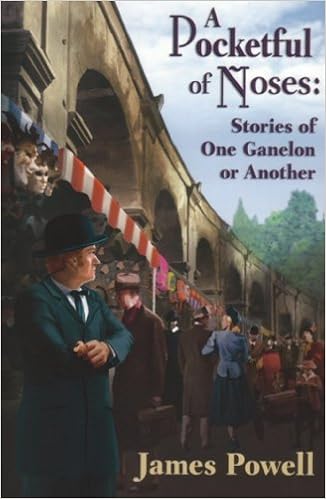by Steve Liskow
I've discussed point of view before, mostly about the unreliable narrator. That's someone who tells the story but whose word is suspect. That person my be lying to cover his own guilt over some event, or maybe he is biased or misunderstands a situtation. Nelly Dean, the caretake in Wuthering Heights, hates Heathcliff and glosses over her own responsibility for many of the things that go wrong in that book, including the elder Catherine's death. Lockwood, the twit who rents the estate and listens to her account, is too self-centered and dumb to understand the significance of what she says.
Huckleberry Finn was raised by an illiterate drunken racist, so he doesn't recognize his own racist attitude toward Jim.
He comes to understand through the adventures he and Jim share. Critics often compare The Catcher in the Rye with the emotionally shattered Holden Caulfield to Huck. Others point to Chief Bromden, the paranoid schizophrenic Indian in One Flew Over the Cuckoo's Nest. All these books gain their power from a narrator who doesn't tell us the truth, expecially since he doesn't lie on purpose.
Many other books, both classic and newer, continue this tradition: The Great Gatsby, We Have Always Lived in the Castle, Gone Girl...
But what about books where the narrator tells us the truth? That's a staple of the classic mystery story. I remember being told that a mystery should always use first person point of view, a dictum I tossed as soon as I read The Maltese Falcon, which uses third person through Sam Spade.
Poe used an unnamed narrator to highlight the brilliance of C. Auguste Dupin. Maybe that's where Conan Doyle got the idea for Dr. Watson, who narrates all except one of the tales of Sherlock Holmes. Captain Hastings, who sounds a lot like Watson, shares his own awe of Hercule Poirot.
Once challenge of using first person point of view is that the narrator needs an interesting voice or persona to keep the reader engaged. If we're going to listen to someone tell an entire book, they have to be interesting, right?
That's true of the unreliable narratiors I mentioned above, but Watson and Hastings are, frankly, boring. They're nice, dull, unimaginative men of a certain age and class, and that narrow mindset exists to make their sleuths seem even more brilliant and dynamic. It also allows us to forgive (as they do) those detectives' personality quirks and shortcomings. Poirot is an arrogant ass, more concerned with his moustaches and his little gray cells than with anyone around him. Holmes is an off-again-on-again cocaine (or morphine, it changes from story to story) user who practices his marksmanship by shooting holes in the wall of his London flat. Apparently, zoning laws were different then.
Another advantage of having these characters as narrators is that Christie and Conan Doyle could hide clues from the reader because Hastings and Watson didn't recognize their importance. It's not really cheating. It's more like slight of hand where the magician makes you look at the wrong hand while the other one palms the ace.
But Hastings and Watson and a whole generation of Golden Age narrators were dull. Their only reason to exist was the genius of the character solving complex plots that resembled higher calculus. I read a lot of those books and tolerated them, but at some point I lost interest because the characters were incidental to stories that were little more than the word problems in my math book.
Rex Stout came along, too. I haven't read all the Nero Wolfe stories, but I don't know which ones I missed.
Stout realized that Nero Wolfe was insufferably vain. He weighed "a seventh of a ton," bred orchids, drank innumberable bottles of beer daily (keeping track by the bottle caps on his desk), and never left his brownstone residence. The traditional dull sidekick would have disappeared in his ego and rendered the books unreadable.
But Stout gave us Archie Godwin. Archie is a good PI in his own right. He's charming, loves the ladies (And Lily Rowan and others reciprocate), and can take care of himself in a fight. He's smart. He's also funny and constantly needles Wolfe and deflates him. The relationship between the two characters has more depth and complexity than their predecessors, and it makes for more interesting reading
.After World War II, Lew Archer and Phillip Marlowe came along to relate more character-driven stores with more complex people as narrators and investigators. I don't know if it's significant that they're both American while Christie and Conan Doyle were British. I do remember Chandler's snide comment in "The Simple Art of Murder," though. "The English are not necessarily the best writers, but they are unquestionably the best dull writers."
In the seventies, Sara Paretsky gave us V. I. Warshawski. A few years later, Linda Barnes gave us Carlotta Carlyle and Sue Grafton gave us Kinsey Milhone. Three feisty, intelligent women PI narrators.
It's probably simplistic to give Stout credit for the rise of the detective teams who appeared in the 1990s, but I'll do it anyway.
Dennis Lehane's Patrick Kenzie and Angie Gennaro are smart and damaged. They explore the dark depths of the human condition and come away even more deeply scarred. They finally married between the last two books in the series, and Patrick left investigating for a nine to five while Angie became a terrific mom to their daughter.
Robert Crais's Elvis Cole and Joe Pike are both military veterans (Vietnam, which would put them both at 70 now) and their youths were littered with emotional fallout that give them a deeper understanding of the people they both help and hunt. Elvis can be funny, too.
I appreciate them more because I grew up with Archie Godwin's voice and vision coloring my own tastes and guiding my reading. When I started writing seriously (who writes frivolously?), Stout was one of my biggest influences.



























